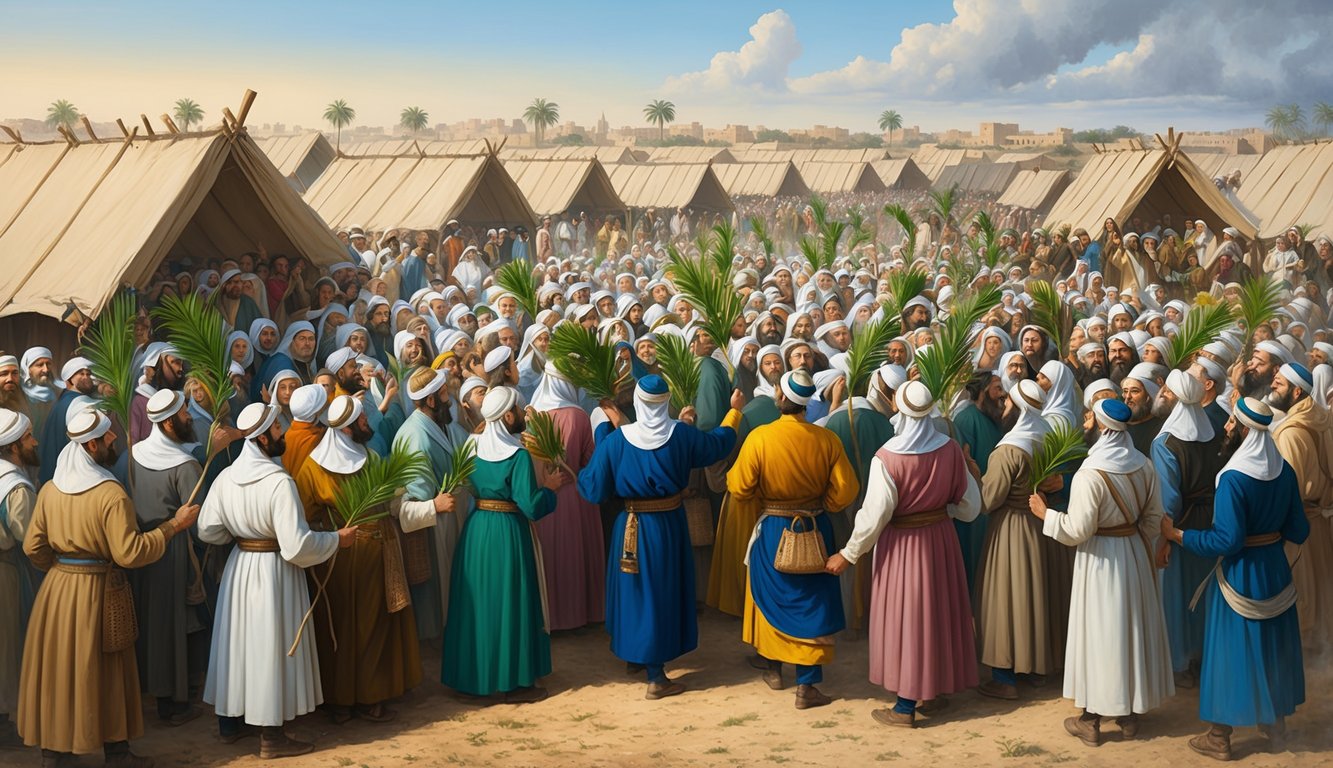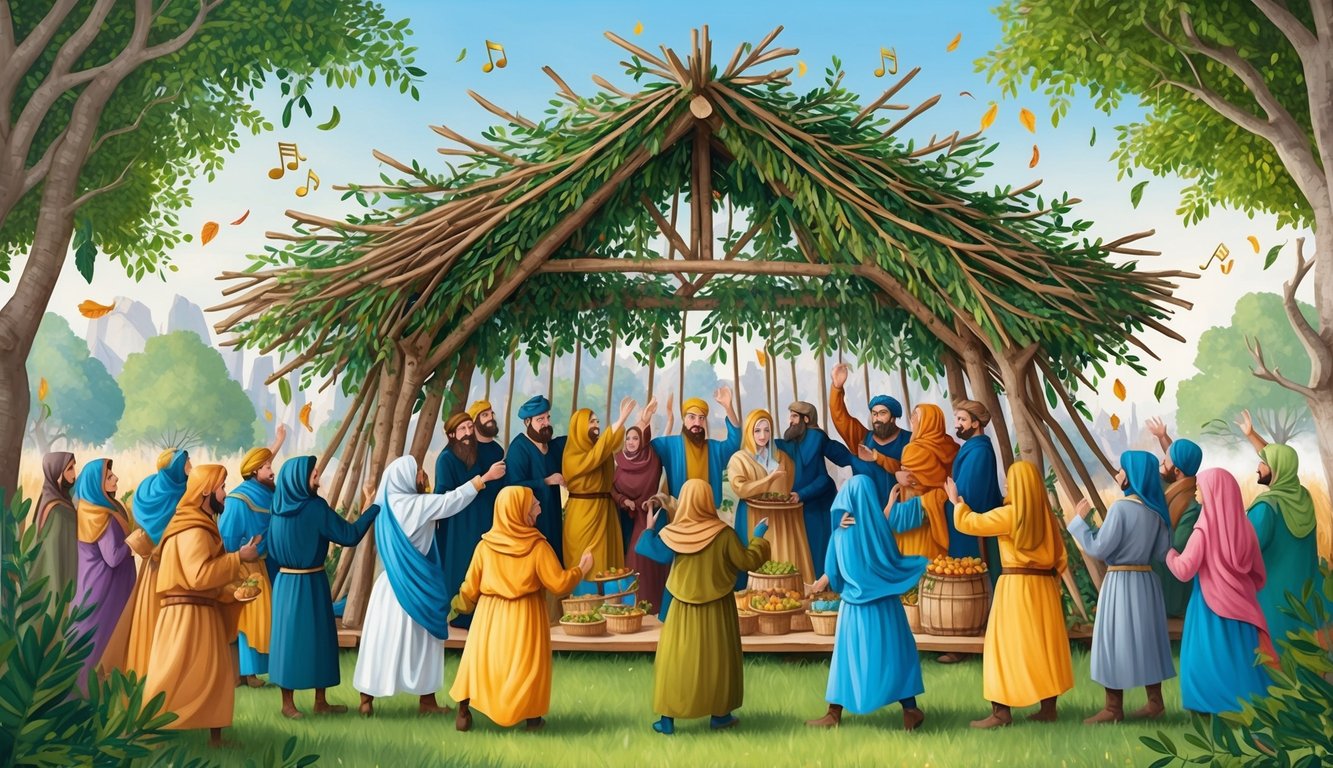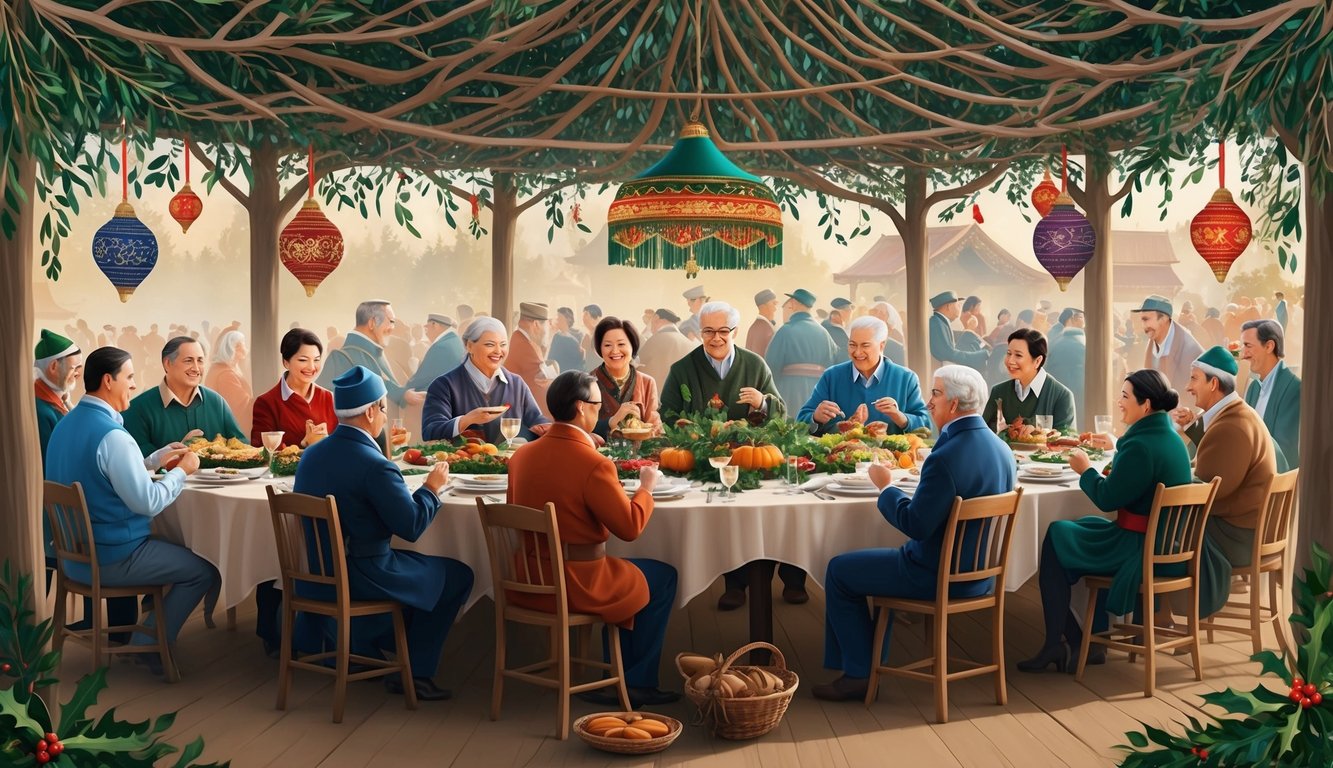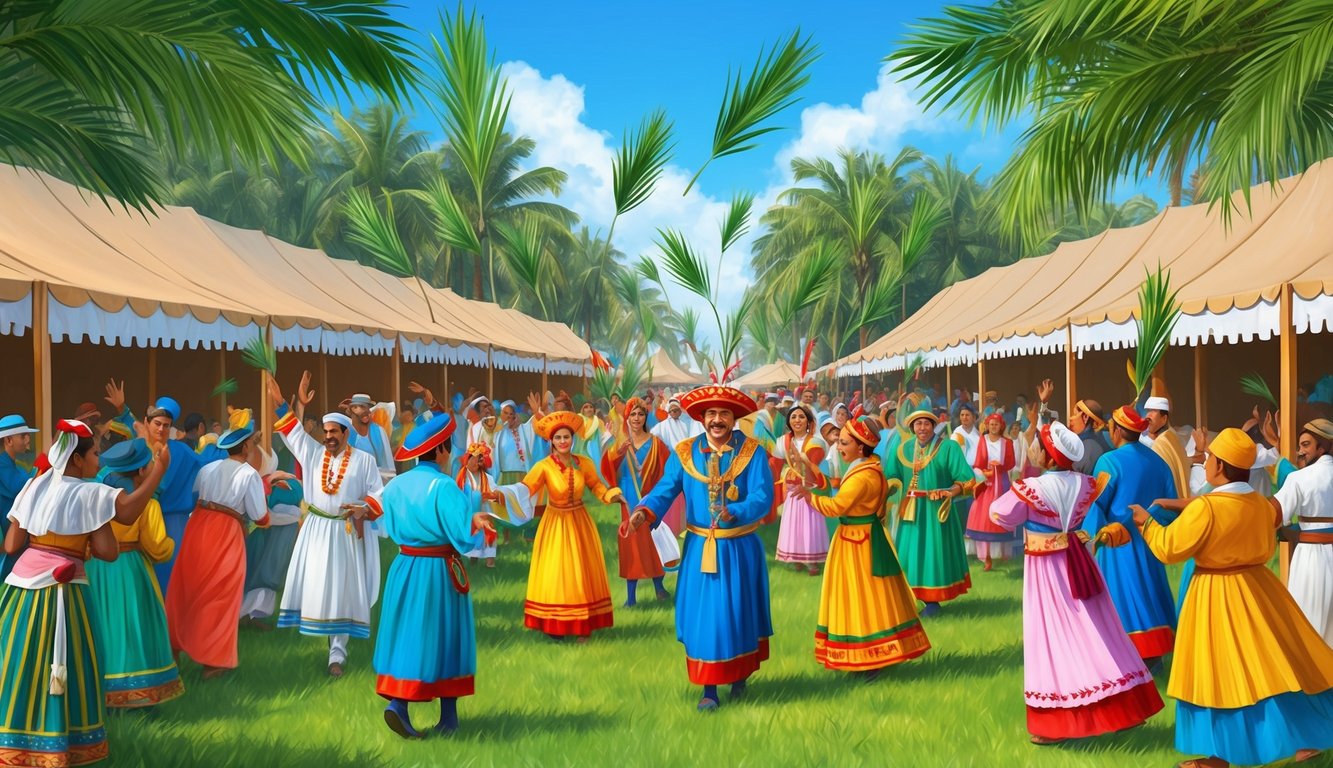Don’t Miss Out On This Unique Astrological Opportunity
Are you tired of spinning your wheels and getting nowhere? Simply put, you’re out of sync: you’re out of alignment with your astral configuration.
But: there’s a kind of map that can help you reclaim your alignment. Think of it as your own personal blueprint to success and happiness: a blueprint that will help you live your most amazing life.
Get started here.
Celebrated for centuries, the Feast of Tabernacles is a vital part of Jewish tradition.
Also known as Sukkot, it commemorates the Israelites’ journey through the wilderness after leaving Egypt.
During this time, the Lord provided for their needs, showcasing His faithfulness and care. The feast involves building temporary shelters, called sukkot, to represent the tents the Israelites lived in during their travels.
In Scripture, the Feast of Tabernacles is a time for offering gratitude.
It marks the end of the harvest season and serves as a reminder of God’s provision.
Today, many people build sukkot, eat meals inside them, and reflect on their connection to the past.
This holiday brings communities together in joy, celebrating their Jewish heritage and faith.
The Feast of Tabernacles also holds prophetic significance.
Some believe it reflects future events involving the Messiah, highlighting its importance beyond its historical roots.
It remains a vibrant part of Jewish life, symbolizing hope, continuity, and community.
By engaging with this tradition, you can connect with a rich tapestry of history and faith.
Key Takeaways
- The Feast of Tabernacles commemorates the Israelites’ time in the wilderness.
- Building and dwelling in sukkot symbolizes reliance on God’s provision.
- It has both historical and prophetic significance in Jewish culture.
Historical Significance

The Feast of Tabernacles, also known as Sukkot, holds a prominent place in Jewish tradition.
Its roots are found in the Bible, highlighting its religious and historical importance for the Hebrew people.
This section explores its three main historical aspects.
Biblical Origins in Leviticus 23
Leviticus 23 outlines the festive calendar for ancient Israel.
Sukkot is highlighted as a time for dwelling in booths, representing the temporary shelters used during the Israelites’ journey.
This feast is also known as the Feast of Ingathering, marking the end of the harvest season.
The biblical instructions emphasize rest on the first and eighth days, celebrating with joy and offerings to God.
Exodus and Wilderness Wanderings
During the Israelites’ exodus, they wandered in the wilderness for forty years.
Connecting closely with this event, the Feast of Tabernacles commemorates how they lived in temporary shelters.
This period was significant as it tested their faith and reliance on God for sustenance.
The tabernacle, a mobile temple, served as a focal point for worship during their travels.
Connection to Other Jewish Feasts
The Feast of Tabernacles is linked to other important feasts such as Passover and the Day of Atonement.
Occurring after these two, Sukkot brings the cycle of holy feasts to a close.
While Passover marks liberation, and the Day of Atonement focuses on repentance, Sukkot celebrates divine protection and provision.
Together, these feasts create a rhythmic pattern of reflection, redemption, and rejoicing.
Religious Observances and Traditions

The Feast of Tabernacles, also known as Sukkot, is rich in religious observances and traditions.
Celebrants build small huts known as sukkahs, perform various rituals and offerings, and embrace a spirit of joy and rest.
Each practice holds deep significance rooted in history and faith.
Construction and Significance of Sukkah
During Sukkot, you construct a sukkah, a temporary hut, to symbolize the booths ancient Israelites lived in during their journey through the wilderness.
The sukkah is made with materials like palm leaves, willows, and leafy trees to fulfill traditional requirements.
It serves as a reminder of the Salvation and protection that God provided.
The sukkah should have at least three walls and a roof that allows you to see the sky.
Inside, it is customary to eat meals, and some may even sleep in it.
This practice encourages you to reflect on themes of faith and dependence on God while fostering a sense of community and hospitality.
Rituals, Sacrifices, and Offerings
Sukkot involves specific rituals performed at the Temple in Jerusalem, including various sacrifices and offerings. Freewill Offerings are made alongside Drink Offerings as expressions of gratitude and devotion.
These acts symbolize a spiritual connection and renewal with God.
One distinctive ritual is the Water Libation Ceremony, also known as the pouring of “Living Water.” This ceremony symbolizes the hope for abundant rain and blessing in the coming year.
Offerings are made from the bounty of the harvest, highlighting the themes of gratitude and divine provision.
Sabbath Rest and Joyous Celebration
Throughout the feast, you are encouraged to embrace a spirit of joy and rest.
The tradition includes the observance of a special Sabbath called the Sacred Assembly.
It is a time of worship and reflection, set apart as holy.
During this sacred gathering, families come together to offer prayers of gratitude and to seek spiritual renewal.
Many also take this time to participate in special devotions, such as a novena to Saint Anne, asking for her intercession and guidance.
The atmosphere is filled with reverence and peace, allowing everyone to deepen their faith and connection with the divine.
The festival is marked by lively celebration, singing, and dancing to express happiness and thanksgiving.
You are invited to share in communal meals and rejoice in the blessings of the harvest.
This joyous spirit signifies the completion of a fruitful year and the hope of continued prosperity and peace.
The Feast in Contemporary Times
The Feast of Tabernacles, traditionally a Jewish harvest festival, holds significance in modern Jewish and Christian communities.
It involves joyful celebrations emphasizing themes of unity and looking back at historical experiences of the Jewish people.
Observance Among Modern Jews
Today, the Feast of Tabernacles, known as Sukkot, is celebrated by Jews worldwide.
It occurs in the month of Tishri and lasts seven days.
Modern practices include building and dwelling in a sukkah, a temporary hut symbolizing the shelters used during the exodus from Egypt.
Lulav and etrog, plants representing harvest and unity, are part of the celebration.
Jerusalem remains a significant location, drawing many for a pilgrimage during Sukkot.
Contemporary Jewish practice highlights themes of thanksgiving and connection with ancestors’ journeys.
In this period, you’ll find communities engaged in prayers, meals, and sharing stories, fostering a sense of unity among Jews around the world.
Christian Perspectives and Celebrations
Many Christians have embraced the Feast of Tabernacles, viewing it through the lens of Jesus Christ and New Testament teachings.
Some see it as a foreshadowing of God’s kingdom and a time of joyous celebration and spiritual renewal.
In various denominations, you might see events that include prayer, worship, and biblical reenactments.
The church often ties this festival to themes of unity and hope, focusing on messages that include all nations.
Christian gatherings during this period sometimes reflect on the prophetic significance of the feast, emphasizing joy and fellowship.
Through these celebrations, Christians may seek to connect with their faith’s Jewish roots, enriching their understanding and practice.
Prophetic and Messianic Connections
The Feast of Tabernacles holds deep prophetic and messianic significance.
This part of the article explores its connections to prophecies concerning Jesus and the anticipation of His second coming.
Prophecies and Fulfillment in Jesus
During the Feast of Tabernacles, readings from Zechariah 14 emphasize messianic themes.
This chapter predicts a time when all nations will come to Jerusalem for worship.
You find strong links between these prophecies and accounts in the New Testament.
In particular, John 7 describes how Jesus attended the feast and spoke about Himself as the “Living Water,” symbolizing spiritual sustenance and fulfillment of prophecy.
By connecting Jesus with these prophetic traditions, the feast adds weight to His identity as the Messiah.
These occurrences helped form early Christian beliefs and messianic expectations.
People at the time were looking for a savior to fulfill the roles described in ancient writings.
Jesus’ actions and teachings during the feast reinforced the idea of His messianic mission and promised salvation.
Symbolism and Anticipation of the Second Coming
The Feast of Tabernacles looks forward to the future fulfillment of messianic promises.
The celebration includes themes of light and water, which symbolize hope for the arrival of God’s kingdom.
Jesus referred to Himself as the Light of the World, a title that indicates His central role in bringing divine truth and enlightenment.
Many believers see this feast as a reflection of the Second Coming, when Jesus will return to establish peace and justice.
The anticipation of His return is rooted in the belief that He will fulfill the rest of the prophecies related to the Messiah.
Through rituals and prayers, participants express hope for a future where all nations will gather in harmony under His reign.
Frequently Asked Questions

The Feast of Tabernacles holds significance in Christian and Jewish traditions, each observing it in unique ways.
It is depicted in the Bible and has prophetic meanings connected to Jesus.
Its observance includes rituals and symbolism that differ across faiths.
What is the significance of the Feast of Tabernacles in Christian traditions?
In Christian traditions, the Feast of Tabernacles is linked to themes of renewal and divine provision.
It is often seen as a time to remember God’s deliverance.
This feast also serves as an opportunity for Christians to express gratitude for spiritual and earthly blessings.
How is the Feast of Tabernacles observed and what are its key rituals?
The Feast of Tabernacles is celebrated by building temporary shelters, or sukkahs, to commemorate the Israelites’ wanderings in the desert.
Other rituals include waving branches, singing hymns, and offering special prayers.
Meals are often shared in these makeshift dwellings to deepen the experience of community and faith.
In what ways is the Feast of Tabernacles depicted in the Book of John, chapter 7?
In John 7, Jesus attends the Feast of Tabernacles in Jerusalem.
This chapter highlights important teachings and events, such as his declaration on the last day of the feast.
Here, Jesus speaks of living water, linking himself to the spiritual refreshing and salvation associated with the feast.
What are the prophetic implications of the Feast of Tabernacles in relation to Jesus’ ministry?
The feast has prophetic implications about the future Messianic age, and many believe it foreshadows the second coming of Christ.
It symbolizes hope and fulfillment of biblical prophecy.
Jesus’ actions during the feast in the New Testament are often interpreted as revealing deeper spiritual truths related to his mission.
How do the practices and symbolism of the Feast of Tabernacles differ between Jewish and Christian observances?
In Jewish traditions, the focus is on historical remembrance and the agricultural aspect of God’s provision.
Christians might emphasize its prophetic meanings and the connections to Jesus’ life and teachings.
Despite these differences, both faiths celebrate themes of thankfulness, renewal, and divine guidance.
What relevant scriptures describe the Feast of Tabernacles and its observance?
Several biblical texts describe the Feast of Tabernacles.
Leviticus 23 lays out rules for this celebration.
Meanwhile, Nehemiah 8 recounts its observance during Ezra’s time.
The feast is also mentioned in various Psalms.
In the New Testament, John 7 provides a detailed account of Jesus’ activities during this festival.



